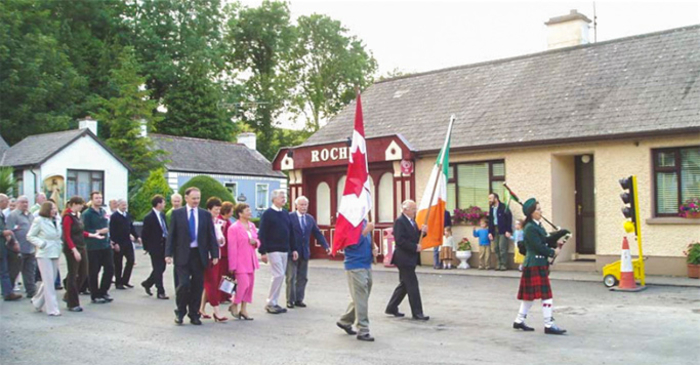We have all been to an Irish Pub somewhere in the world. Some are authentic—you could be in Castlebar or Bohola, others less so. La Gitane is a friendly bar in Bayeux that serves nice Guinness. Leaving there one evening last summer, I looked back to see a faded sign on the canopy above the door with the words ‘Irish Bar.’ I would never have guessed.
My travelling companion and I visited the Saint Patrick Pub in St Malo some days later. We were hunting for the man himself—the Bretons claim him as one of their own. In 2013, the Reverend Marcus Losack published ‘Rediscovering Saint Patrick: A New Theory of Origins.’ Losack explores the theory that St Patrick came from Brittany and not Britain. Losack has tied the location to Chateau de Bonaban near St Malo. It is believed that when Patrick wrote of the ‘Wood of Foclut near the Western Sea’, he was referring to a place in County Mayo. Losack’s work challenges this interpretation—the wood was in Brittany, not Mayo. Our investigations did not reveal anything either way, so a trip to the Saint Patrick Pub for a period of reflection was required. The pub falls into the authentic category with oodles of ambience, genial bar staff, great Guinness, and an impressive collection of Irish whiskies.
Mayo people have, over many centuries, left signposts in foreign lands that point toward home. My travelling companion of almost four decades, Caroline Garvey from Barnastang, Glenisland, often reminds me her ancestors were among those who founded the principality of Mayo in Western Quebec. They fled Islandeady in the 1820s and were among the Irish who travelled along the Ottawa and Blanche Rivers before settling down—a road, ‘Chem. Garvey’, evidences their passage through this place, while a replica of Knock Shrine—St Malachy Roman Catholic Church—cements the County Mayo connection.
Many years ago, on a business trip to Bangalore, I found myself wandering along the upmarket Lavelle Road. More recently, I discovered the road was named after Castlebar man Michael Lavelle. Lavelle was a colonial soldier who settled in Bangalore after retirement. Known locally as ‘Mickey Lavelle, the Gold King of Kolar’, he is celebrated in the region as the founder of the gold mining industry in southern India.
Castlebar man William Norman Bole was travelling to Queensland via San Francisco in 1877 when he missed his connection. He altered his plans and travelled to Victoria, British Columbia. Bole established a legal practice in New Westminster. In return for representing settler John Hall who was charged with murder, he accepted land as payment for his fee. The village of Belcarra, named after Belcarra in County Mayo, developed on the land. The formal twinning of the two Belcarras occurred on 22 June 2007 when Counsellor Bruce Drake came to Mayo. Cathaoirleach, Gerry Coyle, and Belcarra stalwarts Mary B. Jennings and Sean Nestor made up the Irish contingent.
In Argentina, four football clubs are named in honour of Foxford man, Admiral William Browne, founder of the Argentinian navy—Club Atlético Almirante Brown, Arrecifes; Club Almirante Brown, Isidro Casanova; Brown Athletic Club, Adrogué; and Guillermo Brown, Puerto Madryn.

